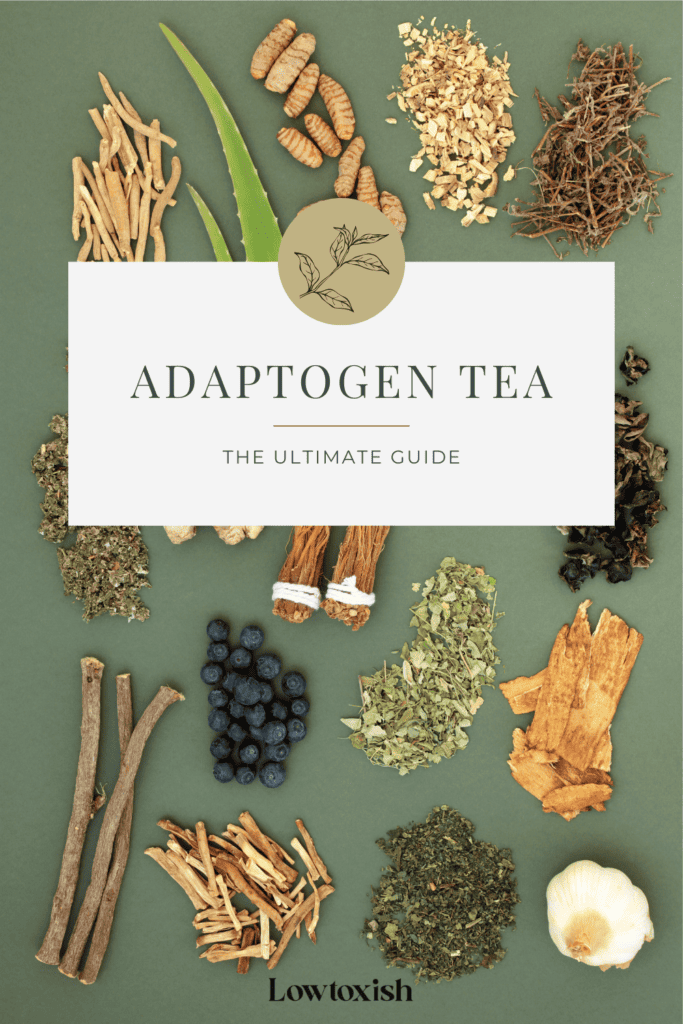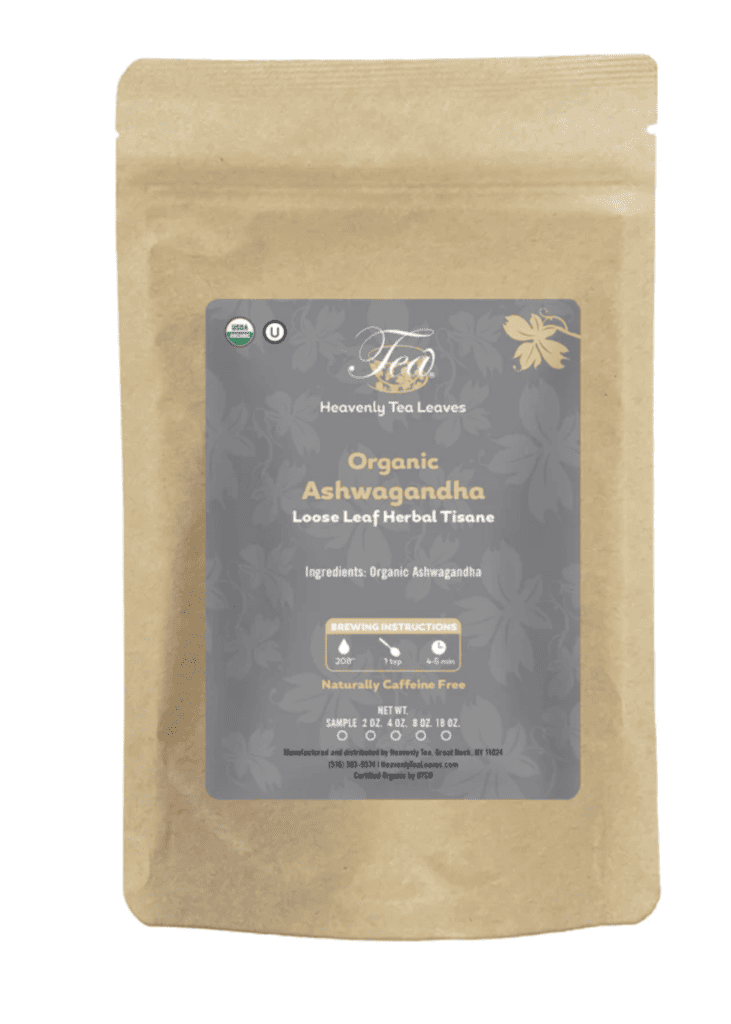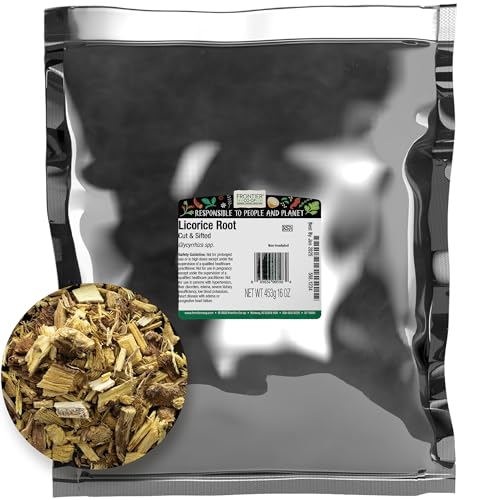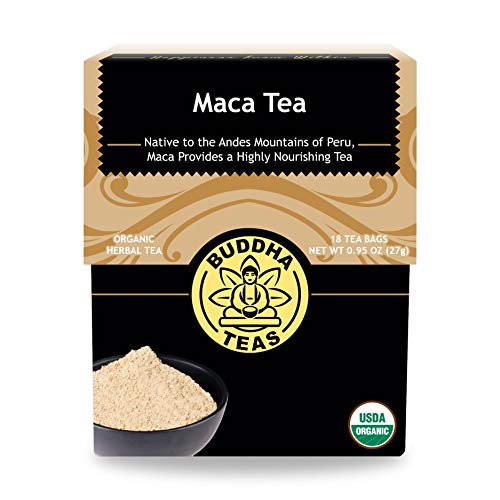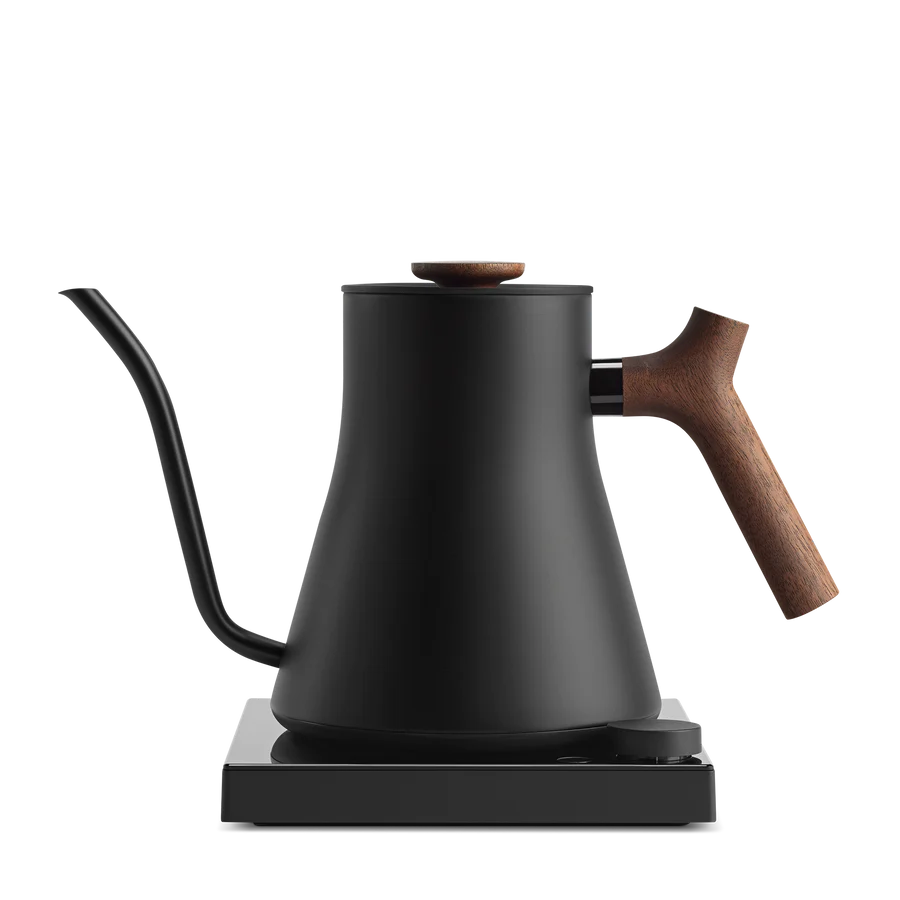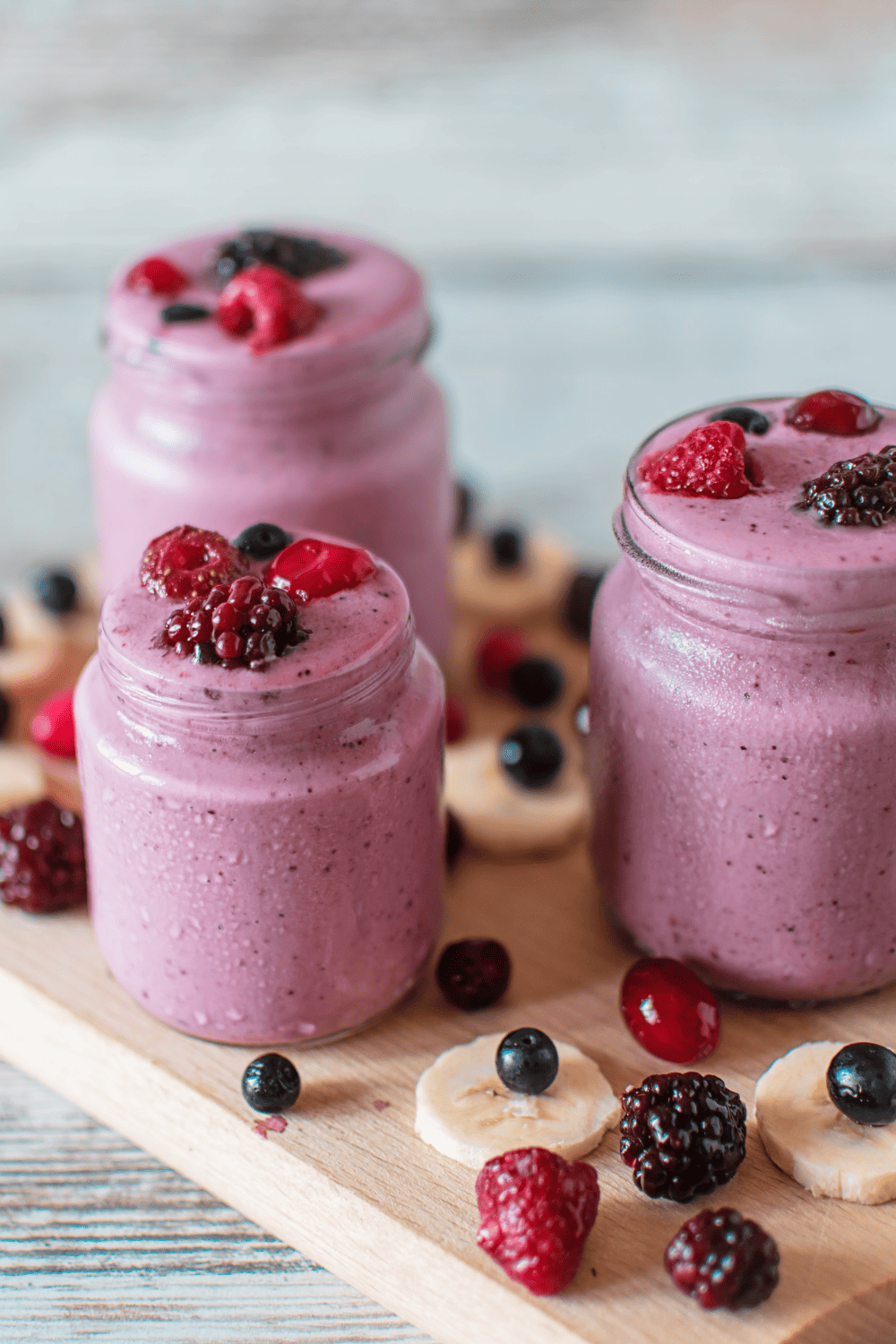Brewing Wellness: The Ultimate Adaptogen Tea Guide
This post is about adaptogen tea.
This post about the adaptogen tea may contain affiliate links, which means I’ll receive a commission if you purchase through my link, at no extra cost to you.
Welcome to the world of adaptogen tea, where ancient practices blend with modern well-being. More people are turning to these herbal brews for balance and tranquility. Join us as we explore the basics of brewing wellness in our ultimate adaptogen tea guide.
Understanding Adaptogens: Adaptogen Tea
Adaptogens are herbs known for their ability to adapt to the body’s needs, helping it cope with stress and maintain balance. Often the reason they contain these miraculous compounds is because they grow in harsh environments where they constantly have to adapt to survive and grow. As we delve into the world of adaptogen teas, it’s essential to understand these remarkable herbs and their unique properties.
Unveiling the Power of Adaptogens: Adaptogen Tea
Before we dive into the art of brewing adaptogen teas, let’s explore some of the most common adaptogens, each with its unique set of benefits.
Ashwagandha (Withania somnifera):
What it is: Known as the “Indian ginseng,” ashwagandha is an adaptogenic herb deeply rooted in Ayurvedic medicine.
What it does: Ashwagandha is renowned for its stress-relieving properties. It helps the body adapt to stressors, promotes relaxation, and supports a balanced mood.
Flavor profile: Ashwagandha tea has a distinct and somewhat earthy flavor profile. The taste is often described as bitter, slightly pungent, and with a hint of nuttiness. Some people may find ashwagandha tea to be an acquired taste due to its unique flavor.
Form: Powder
Usage: Often available in powdered form, it can be dissolved in hot water or added to smoothies and beverages.
Improbable but possible side effects: Ashwagandha is generally well-tolerated, but in some cases, it may cause drowsiness, digestive issues, or an allergic reaction. Individuals with autoimmune diseases, such as rheumatoid arthritis or lupus, should consult a healthcare professional before using ashwagandha.
Holy Basil (Ocimum sanctum or Ocimum tenuiflorum):
What it is: Also called tulsi, holy basil is a sacred herb in Hinduism and a prominent figure in Ayurvedic traditions.
What it does: Holy basil is celebrated for its anti-inflammatory and immune-boosting properties. It helps the body cope with stress, supports respiratory health, and promotes overall well-being.
Flavor Profile: Slightly peppery, clove-like, and mildly sweet.
Form: Dried leaves or tea bags
Usage: Typically used in a tea infuser or brewed as loose leaves.
Improbable but possible side effects: Holy basil is considered safe for most people when used in moderation. However, excessive consumption may cause low blood sugar levels. Pregnant or breastfeeding women and individuals with diabetes should exercise caution and consult with a healthcare provider.
Rhodiola (Rhodiola rosea):
What it is: Native to the arctic regions of Europe and Asia, rhodiola is a hardy herb with a long history of medicinal use.
What it does: Rhodiola is recognized for its adaptogenic effects on physical and mental performance. It helps combat fatigue, enhance endurance, and improve cognitive function.
Flavor profile:
Rhodiola tea has a unique and somewhat complex flavor profile. The taste of rhodiola tea is often described as: bitter, earthy, hint of rose or floral, and slightly astringent.
Form: Capsules, tinctures, or dried root for tea
Usage: Dried rhodiola root can be used in a tea infuser, or it’s available in other forms for consumption.
Improbable but possible side effects: Rhodiola is generally well-tolerated, but it may cause insomnia or irritability in some individuals. People with bipolar disorder should avoid rhodiola, as it could potentially worsen symptoms.
What it is: Ginseng has been a staple in traditional Chinese medicine for centuries and is available in different varieties, including Asian (Panax ginseng) and American (Panax quinquefolius) ginseng.
Ginseng (Panax ginseng and Panax quinquefolius):
What it does: Ginseng is known for its energy-boosting properties. It helps combat fatigue, improves mental alertness, and supports overall vitality.
Flavor profile: Flavor can depend on how you prepare it but in general, the flavor profile includes: bitter, sweet, earthy, spicy or peppery, and mildly astringent.
Form: Whole root, slices, or powder
Usage: Ginseng can be used in various forms – whole roots or slices are often steeped in hot water, while powder can be dissolved.
Improbable but possible side effects: Ginseng is generally safe when used short-term. However, it may cause insomnia, digestive issues, or headaches in some individuals. Long-term use or high doses may lead to side effects such as high blood pressure or overstimulation.
Licorice Root (Glycyrrhiza glabra):
What it is: With a sweet flavor, licorice root has been used in traditional medicine around the world.
What it does: Licorice root is prized for its ability to support the adrenal glands and maintain cortisol levels. It aids in stress management and contributes to hormonal balance.
Flavor profile: Sweet, with a mild licorice taste.
Form: Dried root or powder
Usage: Dried licorice root can be used in a tea infuser, while the powder can be dissolved in hot water or added to other beverages.
Improbable but possible side effects: Prolonged or excessive use of licorice root may lead to issues such as high blood pressure, low potassium levels, or fluid retention. Individuals with heart conditions, high blood pressure, or kidney problems should be cautious with licorice root.
Maca Root (Lepidium meyenii):
What it is: Native to the Andes Mountains, maca root is a cruciferous vegetable with adaptogenic properties.
What it does: Maca is prized for its ability to enhance energy, stamina, and endurance. It also supports hormonal balance and may contribute to mood regulation.
Flavor profile: Earthy, nutty, mildly sweet, malt like, creamy or butterscotch
Form: Powder
Usage: Typically available in powdered form, it can be easily dissolved in hot water or blended into smoothies.
Improbable but possible side effects: Maca is considered safe for most people when consumed in moderate amounts. However, excessive intake may lead to digestive issues. People with thyroid conditions should consult a healthcare provider before using maca.
Eleuthero (Eleutherococcus senticosus):
What it is: Also known as Siberian ginseng, eleuthero is a shrub native to Eastern Asia.
What it does: Eleuthero is celebrated for its adaptogenic effects on physical performance and resilience. It helps the body cope with stress, boost immune function, and improve overall vitality.
Flavor profile: Mildly bitter, earthy, woody, mildly sweet, peppery.
Form: Dried root or tea bags
Usage: The dried root can be used in a tea infuser, or it’s available in pre-packaged tea bags.
Improbable but possible side effects: Siberian ginseng is generally well-tolerated, but high doses may lead to insomnia, increased heart rate, or headaches. People with certain conditions, such as heart disorders or high blood pressure, should consult a healthcare professional before use.
Schisandra Berry (Schisandra chinensis):
What it is: A vibrant red berry with a unique blend of five flavors, schisandra is a key herb in traditional Chinese medicine.
What it does: Schisandra is considered an adaptogen for its ability to combat stress, enhance endurance, and support liver function. It also promotes skin health and mental clarity.
Flavor profile: Tart, sweet, pungent, astringent, berry-like, citrusy
Form: Dried berries or powder
Usage: Dried berries can be used in a tea infuser, while the powder can be dissolved in hot water or added to other recipes
Improbable but possible side effects: Schisandra is considered safe for most people. However, it may cause digestive issues or allergic reactions in some individuals.
Astragalus (Astragalus membranaceus):
What it is: A root used in traditional Chinese medicine, astragalus is renowned for its immune-boosting properties.
What it does: Astragalus supports the immune system, enhances energy levels, and contributes to overall vitality. It is often used to combat fatigue and strengthen the body’s resilience.
Flavor profile: Sweet, mildly earthy, subtle herbal notes, slightly nutty, delicate
Form: Slices, dried root, or powder
Usage: Astragalus slices or dried root can be used in a tea infuser, or the powder can be dissolved.
Improbable but possible side effects: Astragalus is generally safe when used as directed. However, individuals with autoimmune diseases should consult with a healthcare professional before using astragalus.
Cordyceps (Cordyceps sinensis):
What it is: A type of medicinal mushroom, cordyceps has been used in traditional Chinese and Tibetan medicine for centuries.
What it does: Cordyceps is known for its adaptogenic effects on energy metabolism. It helps improve stamina, enhance athletic performance, and support respiratory health.
Flavor profile: Mild earthiness, slight savory notes, delicate and smooth, mushroom essence, and adaptable to blending.
Form: Capsules, powder, or whole dried
Usage: Cordyceps powder can be dissolved in hot water, or it may be available in capsules. Whole dried cordyceps can be steeped as a tea.
Improbable but possible side effects: Cordyceps is generally considered safe. However, individuals with autoimmune diseases or bleeding disorders should exercise caution and consult with a healthcare provider.
Gotu Kola (Centella asiatica):
What it is: A leafy green plant native to Asia, gotu kola has been used in traditional medicine for its potential health benefits.
What it does: Gotu kola is valued for its ability to promote mental clarity, reduce anxiety, and support healthy circulation. It is often used to enhance cognitive function.
Flavor Profile: Mildly bitter, with subtle earthy and sweet notes.
Form: Dried leaves or powder
Usage: Gotu kola leaves can be used in a tea infuser, or the powder can be dissolved in hot water or added to other recipes.
Improbable but possible side effects: Gotu kola is generally safe for most people when used in moderation. Excessive intake may lead to liver damage.
Moringa (Moringa oleifera):
What it is: Often referred to as the “drumstick tree,” moringa is a nutrient-dense plant native to parts of Africa and Asia.
What it does: Moringa is rich in antioxidants and is known for its anti-inflammatory properties. It supports overall health and may contribute to a sense of well-being.
Flavor Profile: Earthy, similar to green tea but with a slightly milder taste.
Form: Dried leaves or powder
Usage: Moringa leaves can be used in a tea infuser, or the powder can be dissolved in hot water or incorporated into various dishes.
Improbable but possible side effects: Moringa is generally safe for most people when consumed in moderate amounts. Excessive intake may have a laxative effect.
Turmeric (Curcuma longa):
What it is: A golden-hued spice, turmeric has been a staple in traditional medicine, particularly in Ayurveda.
What it does: Turmeric is prized for its anti-inflammatory and antioxidant properties. It supports joint health, aids digestion, and contributes to overall wellness.
Flavor Profile: Earthy, slightly bitter, with a hint of spiciness.
Form: Whole root, slices, or powder
Usage: Turmeric can be used in various forms – whole root or slices are often steeped in hot water, while the powder can be dissolved or used in cooking.
Improbable but possible side effects: Turmeric is generally safe when used as a spice in food. However, high doses or long-term use of turmeric supplements may lead to digestive issues or interact with certain medications.
Adaptogen Blends:
What they are: Many adaptogen teas feature carefully crafted blends to offer a spectrum of benefits. Common blends may include combinations like chamomile and ashwagandha for relaxation or green tea and rhodiola for a balanced energy boost.
What they do: Adaptogen blends combine the strengths of multiple herbs, creating synergistic effects that address various aspects of well-being. Blends are versatile and cater to individual health goals.
Understanding these adaptogens empowers you to create personalized tea blends that align with your unique wellness objectives. As we move forward, we’ll explore how to harness the potential of these adaptogens in the ultimate guide to brewing wellness on LowToxish.
Adaptogen Tea Blend Examples
- Adaptogen Chai: Blend of ashwagandha, holy basil, licorice root, and cinnamon for a warming and grounding chai experience.
- Stress Relief Blend: Combination of rhodiola, ashwagandha, and tulsi (holy basil) for a stress-busting and calming infusion.
- Energizing Blend: Mix of eleuthero (Siberian ginseng), maca root, and rhodiola for a tea designed to boost energy and vitality.
- Harmony Blend: Blend of adaptogens like schisandra, ashwagandha, and gotu kola for a balanced and harmonizing tea.
- Calm and Focus Blend: Combination of chamomile, ashwagandha, and gotu kola for a tea aimed at promoting relaxation and mental focus.
- Mushroom Adaptogen Blend: Incorporates adaptogenic mushrooms like reishi, cordyceps, and chaga with other herbs for a robust and earthy flavor.
- Tulsi Ginger Adaptogen Tea: Mix of tulsi (holy basil), ginger, and licorice root for a soothing and immune-supportive blend.
- Anti-Inflammatory Turmeric Blend: Features adaptogens like turmeric, ginger, and ashwagandha to provide anti-inflammatory and immune-supportive properties.
- Cacao Adaptogen Elixir: Blend of adaptogens with cacao for a comforting and indulgent elixir with stress-relieving properties.
- Minty Adaptogen Blend: Combines peppermint, tulsi, and ashwagandha for a refreshing and calming mint-infused tea.
When creating your adaptogen tea blends, consider the individual flavors of each adaptogen and how they complement one another. Additionally, you can add other herbs, spices, or botanicals to enhance the taste and aroma of your blends. Adjust the ratios based on your personal preferences and experiment to find the perfect combination for your wellness routine.
The Ritual of Brewing:
Brewing adaptogen teas is not just about making a beverage; it’s a ritual. Begin by selecting high-quality adaptogen herbs like ashwagandha, holy basil, or rhodiola. The choice of herbs can depend on personal preferences and wellness goals. Opt for loose leaves or pre-packaged blends for a convenient brewing experience.
Crafting the Perfect Cup:
Ingredients:
- 1 teaspoon of adaptogen herbs (or a blend)
- 8 ounces of hot water
- Optional: honey, lemon, or other herbs for flavor
Steps:
- Choose Your Blend: Select adaptogens that align with your wellness goals, whether it’s stress reduction, immune support, or energy enhancement.
- Boil Water: Heat water to just below boiling, preserving the delicate flavors and properties of the adaptogens.
- Infuse: Place the adaptogen herbs in a teapot or infuser, and pour the hot water over them. Let it steep for 5-7 minutes to allow the herbs to release their beneficial compounds.
- Strain and Sip: Strain the tea into your favorite mug, and savor the aroma as you take your first sip. Enhance the flavor with a touch of honey, a squeeze of lemon, or other complementary herbs.
Favorite Brewing Tools
Non Toxic Kettles
Non Toxic Tea Pots for Adaptogen Tea
Non Toxic Tea Infusers for Adaptogen Tea
Conclusion
Adaptogen tea rocks! The benefits of adaptogens are incredible and the ritual of tea is a perfect way to consume them. I recommend choosing adaptogens based on their benefits and allowing yourself to have fun as you try them each, one at a time so you can see the isolated tastes and effects. As you learn how they affect your body and what tastes you prefer you can narrow down your favorites to go back to and also play with creating blends. Some of the adaptogens don’t taste the best so you will probably want to combine them with other herbal teas like lemon, ginger, lavender, and mint as well as honey and maybe milk (dairy or not dairy).
My personal and longest-term experience with consuming adaptogens is when I used to drink Shakeology, an adaptogen shake, every day for 7 years. I will tell you what, I took it for granted but I never got sick for more than 1-2 days during those 7 years. I stopped drinking Shakeology because I got tired of the taste and let’s just say I was just sick for a full month and I’m ready to add Shakeology and adaptogen tea back into my daily routine.
This post was about adaptogen tea.
More posts like this…
The Ultimate List of Non Toxic Tea Kettle Options
How to Choose the Highest Polyphenol Olive Oil: Top 11 Options
Favorite Health Posts
Favorite Posts
Last update on 2024-07-24 / Affiliate links / Images from Amazon Product Advertising API
This product presentation was made with AAWP plugin.

